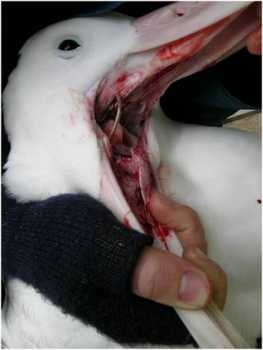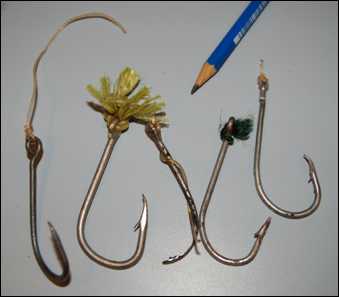Cindy Ridley of the United Kingdom's Anglia Ruskin University and colleagues have published in the journal Aquatic Conservation: Marine and Freshwater Ecosystems a study of whether it is feasible to identify the provenance of fishing gear found associated with albatrosses and petrels in the South Atlantic.

This study shows that cladistic and multivariate techniques have the potential to categorize lost fishing gear and so could constitute an effective deterrent against continued bad practice.
The paper's abstract follows:
"1. The global decline of albatrosses (Diomedeidae: Procellariiformes) is thought to have occurred largely as a direct result of fishery-related mortality. Albatrosses and other large petrels interact with fisheries in several ways, including scavenging used bait and discarded offal, which may contain hooks.
2. Hooks that are ingested by breeding birds are often fed to chicks which subsequently regurgitate them shortly before fledging.
3. In this study a series of mathematical (cladistic, cluster and principal components) analyses are applied to a sample of 241 items of fishing gear (hook, snood and hook/snood unit) collected from seabird nest sites on Bird Island, South Georgia, and 44 reference gear items provided by four South Atlantic regional fisheries.
4. The five separate analyses failed to assign most gear to a particular fishery or to identify any consistent annual trends. The homogeneous nature of the material, which was largely derived from the same manufacturers, meant that gear origin could not be determined. This suggests that hooks found at seabird colonies in this, and potentially other regions, will be of limited use in identifying offending fisheries, unless operators are obliged to deploy gear with unique marks in the future.
5. Nevertheless, it is suggested that this approach should work effectively where birds interact with a range of fisheries targeting different species using variable gear. This study therefore represents an innovative approach to the characterization of lost fishing gear with potentially widespread application."

Reference:
Ridley, C., Harrison, N.M., Phillips, R.A. & Pugh, P.J.A. 2010. Identifying the origins of fishing gear ingested by seabirds: a novel multivariate approach. Aquatic Conservation: Marine and Freshwater Ecosystems 20: 621-631. http://onlinelibrary.wiley.com/doi/10.1002/aqc.1136/abstract.
With thanks to Richard Phillips, British Antarctic Survey.
John Cooper, ACAP Information Officer, 9 November 2010

 English
English  Français
Français  Español
Español